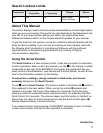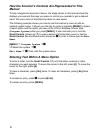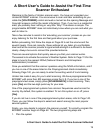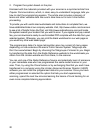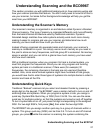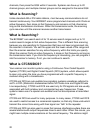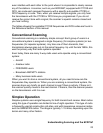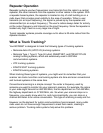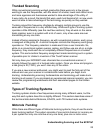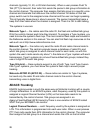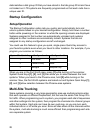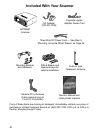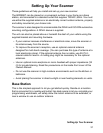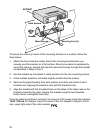25
Understanding Scanning and the BCD996T
Trunked Scanning
While conventional scanning worked great while there were only a few groups
wanting to use the frequencies, with the advent of smaller, lower-cost radios more
and more agencies and businesses wanted to take advantage of the utility of
2-way radio. As a result, the bands that were used most became full, so new users
were not able to take advantage of the technology as quickly as they wanted.
Trunking solved this frequency shortage by allowing multiple groups to use the
same set of frequencies in a very efficient way. While each type of trunking system
operates a little differently (see the next few sections), they all work on the same
basic premise: even in a system with a lot of users, only a few users are ever
transmitting at any one time.
Instead of being assigned a frequency, as with conventional systems, each group
is assigned a talk group ID. A central computer controls the frequency each group
operates on. This frequency selection is made each time a user transmits. So,
while on a conventional system queries, replies, and follow-ups are all on a single
frequency, they could each be on completely different frequencies on a trunked
system. This semi-random frequency assignment made monitoring such a system
impossible prior to Uniden’s invention of the TrunkTracker scanner.
Not only does your BCD996T scan channels like a conventional scanner, it
actually follows the users of a trunked radio system. Once you know and program
a talk group’s ID (TGID), you won’t miss any of the action.
If you are a new scanner enthusiast, you might want to read the first part of this
manual and use your scanner in conventional mode before you begin trunk
tracking. Understanding scanning fundamentals and terminology will make trunk
tracking much easier. If you are already an experienced scanner operator, you can
review the programming worksheets and their associated pages on the Uniden
website.
Types of Trunking Systems
Trunking systems divide a few frequencies among many different users, but the
way that each system does this is slightly different. This section describes some of
the technical data behind Motorola, EDACS, and LTR trunked radio systems.
Motorola Trunking
While there are different types of Motorola trunking systems, they all use the same
basic trunking method. The system consists of one control channel (or as many as
4 per system but only one is active at any one time), plus one or more voice



